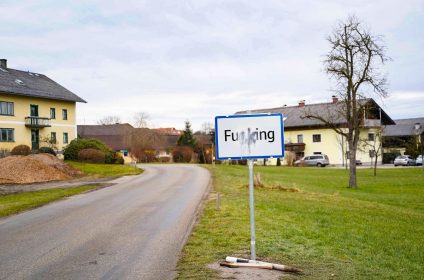Weather & Climate In Fugging

Approximately 500 meters above sea level, on a plateau in the northern Alps, lies Fugging. This region experiences cold winters and pleasant summers typical of a continental climate. While 1,066 mm of precipitation falls annually on average, the average annual temperature is 8.9 °C. The four seasons of the town are identified by variations in temperature, rainfall, and sunshine.
Normally lasting from December to February, the winter season has an average temperature of 0.6 °C. At an average of -1.7 °C, January is the coldest month. Wintertime brings usual snowfall of 60 cm. Usually, the snow cover lasts for around 100 days, from November to March. Since there are typically many clouds throughout the winter, there are just 2.5 hours of sunshine per day on average. Winter is often the driest season with 64 millimeters of precipitation on average each month. Snow, rain and sleet are the three primary types of precipitation. Wintertime winds are particularly noticeable, averaging 5.3 km/h.The most often occurring direction of winds is westward.
March to May, the springtime months, typically average 10.1 °C in temperature. At an average high of 15.6 °C, May is the warmest month. Springtime brings with it a modest increase in temperature, more precipitation, and longer days. In the spring, there is a good deal of precipitation—86 mm on average falls per month. Most often occurring precipitation types include hail, snow, and rain. Springtime brings with it occasional clouds in the sky, which results in partly overcast conditions. The average daily sunlight is roughly 5.1 hours. Known to be the windiest season, spring has an average wind speed of 5.7 km/h. The most often encountered direction is westward.
At 18.8 °C on average, June through August is regarded as summer. July, with an average of 20.5 °C, is the hottest month. At 109 mm of rainfall on average per month, summer is regarded as the warmest and wettest season. Rain, thunderstorms and fog are the three most often occurring precipitation kinds. At 7.2 hours of sunshine on average every day, summer is also regarded as a sunny season. The 4.8 km/h average wind speed makes the summer the calmest time of year. The most often occurring direction of winds is westward.
At 9.9 °C on average, September through November is regarded as the fall season. As November averages 5.1 °C, it is the coldest month. A steady drop in temperature, precipitation, and sunshine characterizes autumn, a transitional season. There is a fair quantity of precipitation in autumn—roughly 79 mm on average per month. The three most often occurring types of precipitation are fog, snow, and rain. Autumnal weather is cloudy with 3.6 hours of sunshine on average every day. 5.4 km/h average strong winds are a hallmark of autumn.The most often occurring direction of winds is westward.
Many factors, like Fugging’s position, topography, height, and proximity to the Alps and the Atlantic Ocean, influence its weather. Nestled on a level location between the Alps and the Bohemian Massif is the village of Innviertel. A continental climate with regular yearly precipitation and warm summers and winters characterizes the region. As it supplies mild, moist air masses, the Atlantic Ocean affects the region. Furthermore acting as a barrier, the Alps shield the area from the cold, dry air masses that come from the north and east. Situated on a plateau, the hamlet enjoys more sunshine and less fog than the nearby lowlands. Owing to its proximity to the German border, the hamlet is more likely to experience cold and wet weather from both the Baltic and North Seas.
The climate of Fugging is erratic and open to change as a result of both natural and human factors. Periodically the community experiences extreme weather events like heat waves, cold snaps, storms, floods, and droughts. These events could have a major impact on the ecology, agriculture, and tourism. Additionally affecting the town is global climate change, which is predicted to result in higher temperatures, more precipitation, and more frequent extreme weather events in the future. Local climate change affects the town as well because of surrounding pollution, deforestation, and urbanization. The town is a part of Tarsdorf municipality, which has undertaken several climate change projects. Among these include rising the use of renewable energy sources, reducing greenhouse gas emissions, and improving water management.












